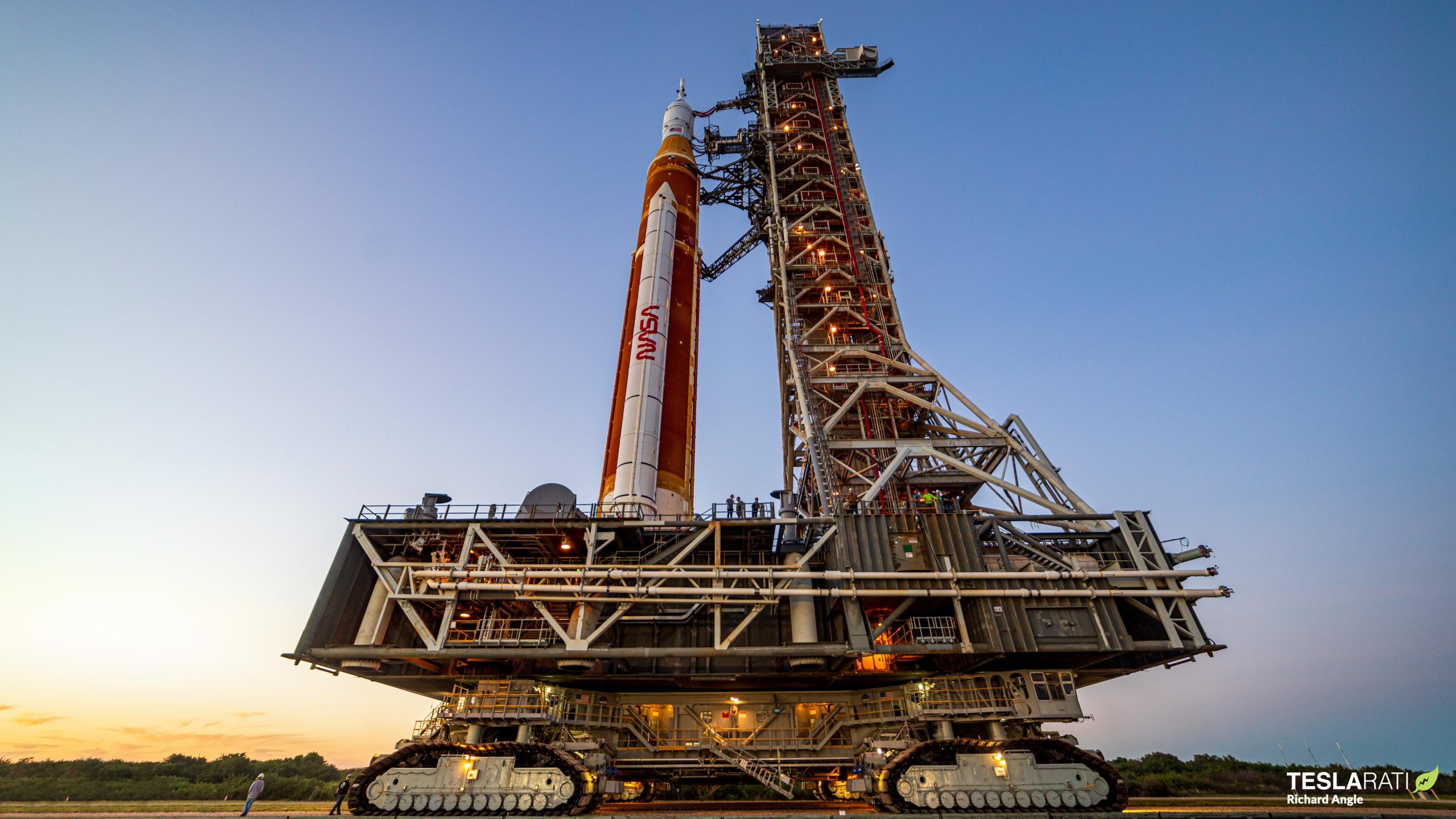
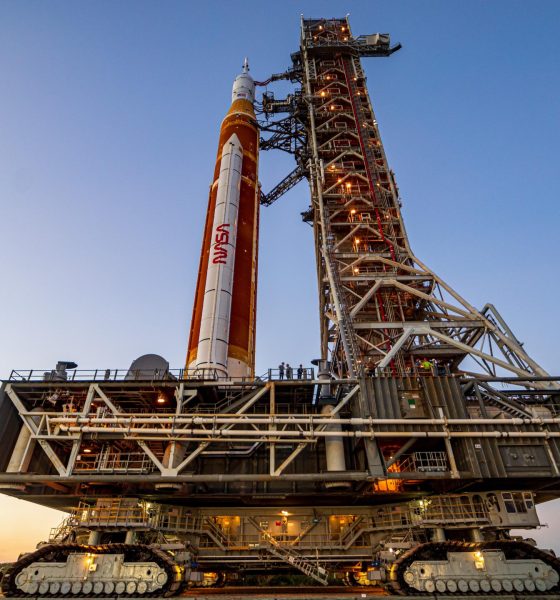
News
NASA to roll SLS Moon rocket to the launch pad two days early
NASA has given the go-ahead to roll its Space Launch System (SLS) Moon rocket to the launch pad two days ahead of schedule.
That bodes well for plans to launch the rocket for the first time (a milestone NASA originally hoped to pass in December 2016) as early as late August or September 2022. NASA says that its first SLS rocket is now on track to begin a roughly 24-hour journey to Kennedy Space Center’s LC-39B launch pad at 9 pm EDT on August 16th. That will kick off approximately two more weeks of work that could finally culminate in the rocket’s first real launch attempt as early as August 29th, a moment anywhere from 12 to 16 years in the making.
SLS was created by Congress in 2010 when the legislative body drafted a law demanding that NASA develop a heavy-lift rocket to replace the Space Shuttle. In practice, Congress (particularly several key stakeholders with former Shuttle workforce and facilities in their states or districts) was primarily interested in keeping former Shuttle infrastructure active and workers employed, and left NASA to figure out how to retroactively engineer a rocket out of a list of legal requirements mostly driven by politics.
NASA ultimately devised a rocket that would extrapolate Shuttle external tank technology into a larger liquid hydrogen/oxygen ‘core stage’ powered by four flight-proven, reusable Space Shuttle Main Engines (SSME; now RS-25). A relatively small orbital upper stage derived from Boeing’s Delta IV rocket would sit atop the core stage, which would be augmented with two stretched Shuttle-derived solid rocket boosters (SRBs). Altogether, the first variant of SLS – Block 1 – is expected to be able to launch up to 95 tons (~210,000 lb) to low Earth orbit and around 27 tons (~59,500 lb) to the Moon, 32% and 38% worse than the Saturn V rocket NASA abandoned for the Space Shuttle in the 1970s.
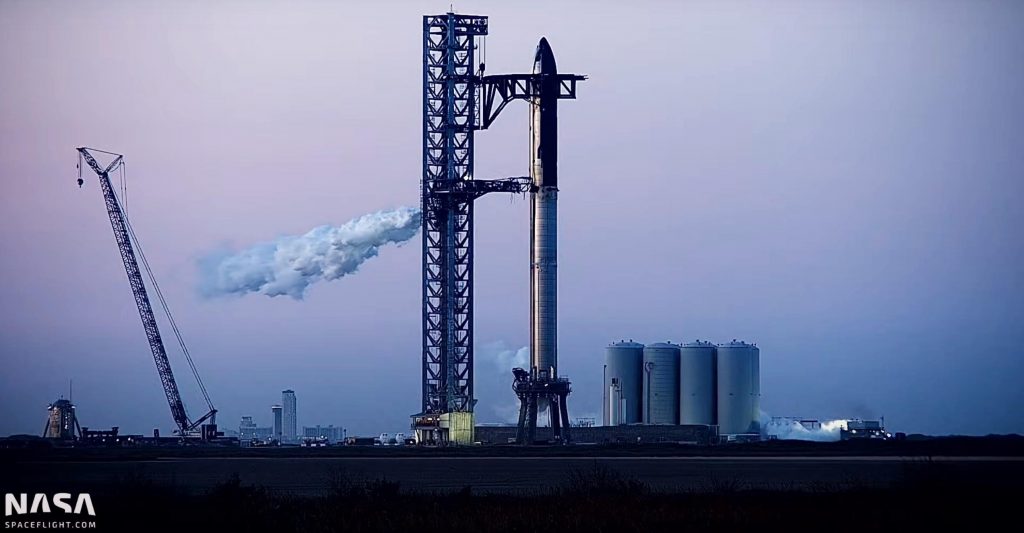
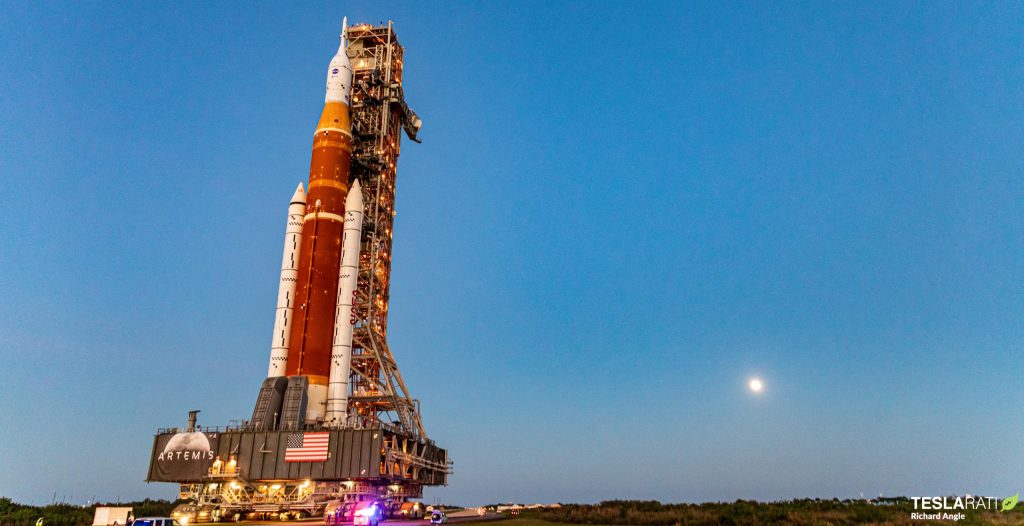
Nevertheless, SLS will likely become the most powerful rocket currently in operation if it successfully debuts within the next few months. Only SpaceX’s Starship, which will eventually launch a Starship-derived Moon lander for NASA, is likely to challenge or beat the performance of SLS within the next 5-10 years.
However, after more than half a decade of delays and around $25 billion spent without a single launch to show for its investment, NASA no longer has any near-term plans to use SLS for more than sending a few astronauts on their way to the Moon once every year or two. The only tangible payload currently assigned to SLS Block 1 is NASA’s own Orion spacecraft, an earlier version of which Lockheed Martin began developing for NASA in 2006. Approximately 16 years and $25 billion later, the Orion capsule will be better than the Apollo Program’s Command module (capsule) by most measures, but its service (propulsion) module will be far worse.
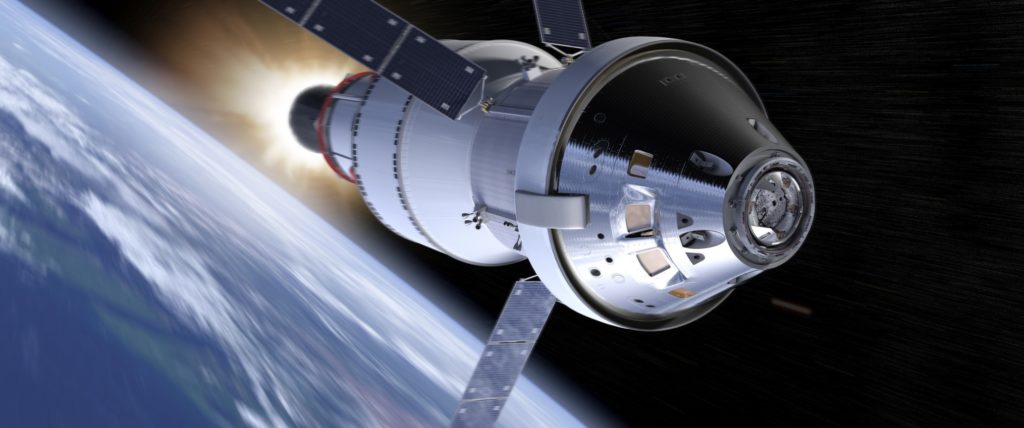
With about half as much usable delta V (propulsive capability) as the Apollo CSM, Orion is incapable of transporting astronauts to the same convenient low lunar orbits that the Apollo Program used, forcing NASA to send it to high, exotic alternatives. As a result, NASA has been forced to create a multi-billion-dollar destination for Orion (the Gateway station) and complicate the mission of new Moon landers like SpaceX’s Starship.
Countless pitfalls and shortcomings aside, NASA is about to finally roll the fourth most capable flightworthy rocket ever assembled (behind Saturn V, N-1, and Energia) to the launch pad. Regardless of the outcome of the mission, SLS will likely be the fifth largest rocket (including the Space Shuttle) ever launched when it lifts off. If that launch is successful, the achievement will be even more impressive, marking the third time out of three attempts that NASA has successfully launched a super heavy-lift launch vehicle (>50t to LEO) on its first try.
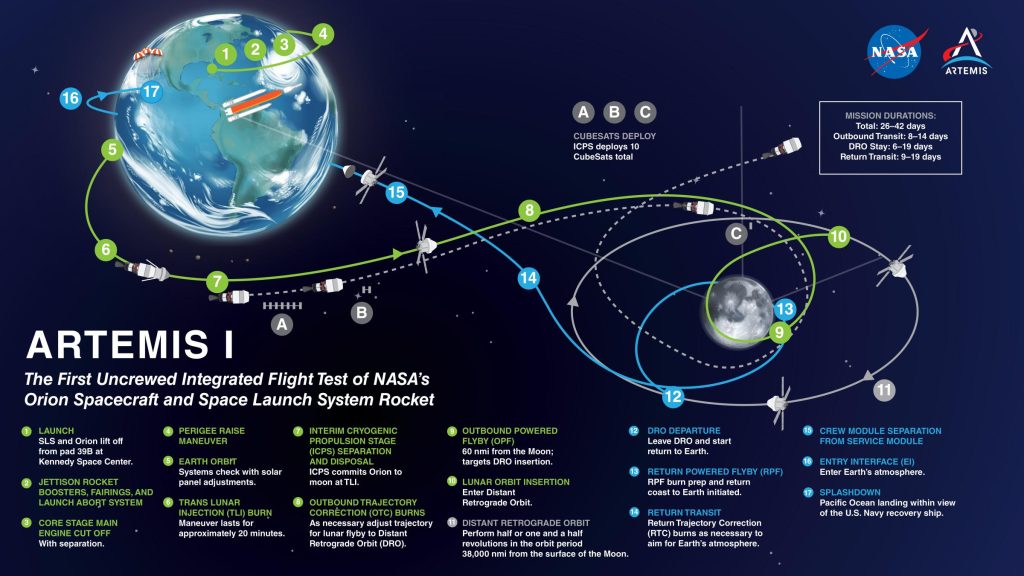
A successful Artemis I launch would also give the Orion spacecraft an opportunity to enter orbit around the Moon and test most of the systems it will need for Artemis II, which is intended to carry two astronauts. Orion won’t carry or test any life support or docking systems, making it only a partial demonstration, but it will still be the first time a prototype of a crewed spacecraft has attempted to enter lunar orbit since December 1972.

Cybertruck
Tesla updates Cybertruck owners about key Powershare feature

Tesla is updating Cybertruck owners on its timeline of a massive feature that has yet to ship: Powershare with Powerwall.
Powershare is a bidirectional charging feature exclusive to Cybertruck, which allows the vehicle’s battery to act as a portable power source for homes, appliances, tools, other EVs, and more. It was announced in late 2023 as part of Tesla’s push into vehicle-to-everything energy sharing, and acting as a giant portable charger is the main advantage, as it can provide backup power during outages.
Cybertruck’s Powershare system supports both vehicle-to-load (V2L) and vehicle-to-home (V2H), making it flexible and well-rounded for a variety of applications.
However, even though the feature was promised with Cybertruck, it has yet to be shipped to vehicles. Tesla communicated with owners through email recently regarding Powershare with Powerwall, which essentially has the pickup act as an extended battery.
Powerwall discharge would be prioritized before tapping into the truck’s larger pack.
However, Tesla is still working on getting the feature out to owners, an email said:
“We’re writing to let you know that the Powershare with Powerwall feature is still in development and is now scheduled for release in mid-2026.
This new release date gives us additional time to design and test this feature, ensuring its ability to communicate and optimize energy sharing between your vehicle and many configurations and generations of Powerwall. We are also using this time to develop additional Powershare features that will help us continue to accelerate the world’s transition to sustainable energy.”
Owners have expressed some real disappointment in Tesla’s continuous delays in releasing the feature, as it was expected to be released by late 2024, but now has been pushed back several times to mid-2026, according to the email.
Foundation Series Cybertruck buyers paid extra, expecting the feature to be rolled out with their vehicle upon pickup.
Cybertruck’s Lead Engineer, Wes Morrill, even commented on the holdup:
As a Cybertruck owner who also has Powerwall, I empathize with the disappointed comments.
To their credit, the team has delivered powershare functionality to Cybertruck customers who otherwise have no backup with development of the powershare gateway. As well as those with solar…
— Wes (@wmorrill3) December 12, 2025
He said that “it turned out to be much harder than anticipated to make powershare work seamlessly with existing Powerwalls through existing wall connectors. Two grid-forming devices need to negotiate who will form and who will follow, depending on the state of charge of each, and they need to do this without a network and through multiple generations of hardware, and test and validate this process through rigorous certifications to ensure grid safety.”
It’s nice to see the transparency, but it is justified for some Cybertruck owners to feel like they’ve been bait-and-switched.
News
Tesla’s northernmost Supercharger in North America opens
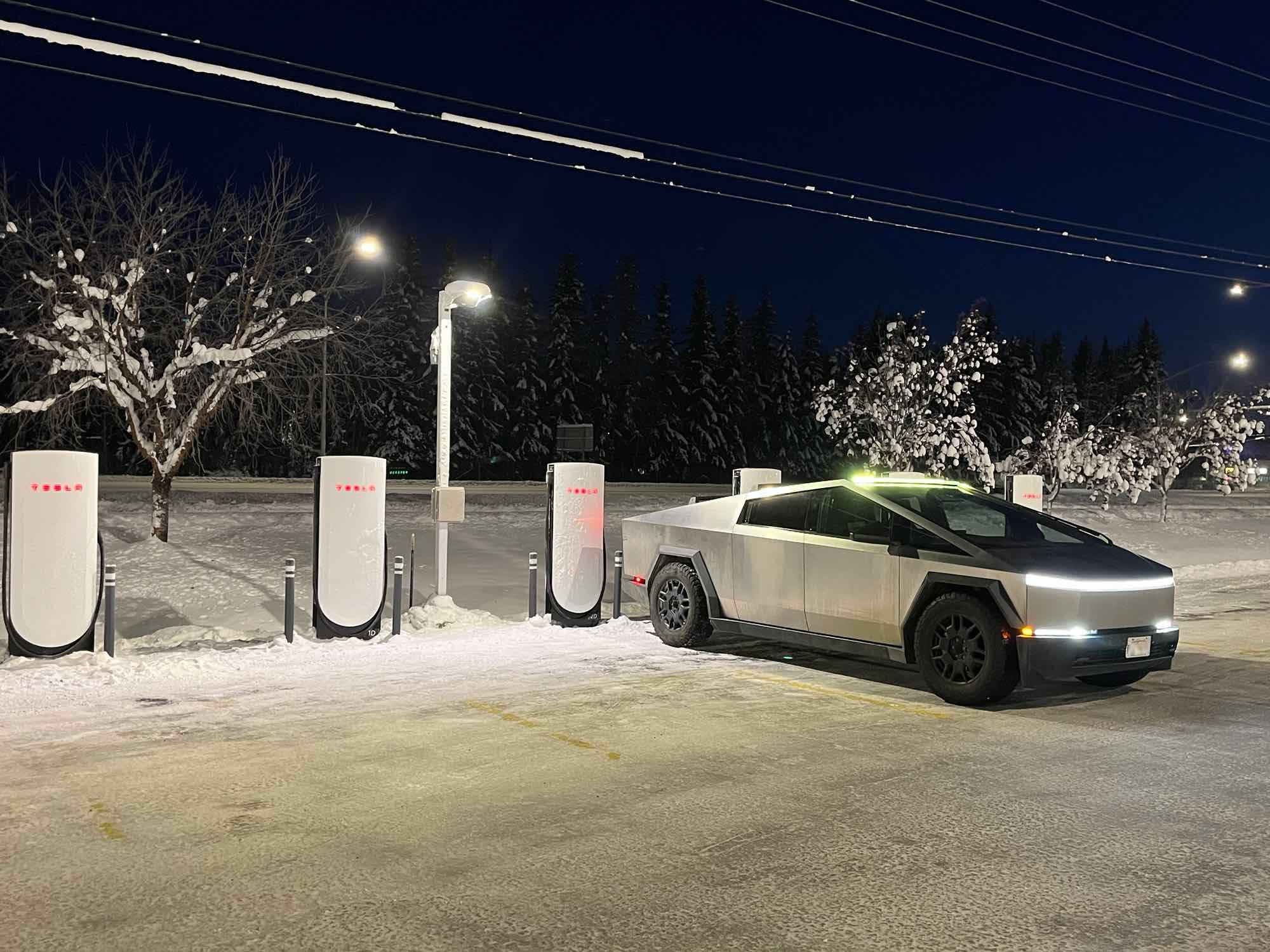
Tesla has opened its northernmost Supercharger in Fairbanks, Alaska, with eight V4 stalls located in one of the most frigid cities in the U.S.
Located just 196 miles from the Arctic Circle, Fairbanks’s average temperature for the week was around -12 degrees Fahrenheit. However, there are plenty of Tesla owners in Alaska who have been waiting for more charging options out in public.
There are only 36 total Supercharger stalls in Alaska, despite being the largest state in the U.S.
Eight Superchargers were added to Fairbanks, which will eventually be a 48-stall station. Tesla announced its activation today:
North America’s northernmost Supercharger Fairbanks, AK (8 stalls) opened to public. https://t.co/M4l04DZ6B5 pic.twitter.com/zyL6bDuA93
— Tesla Charging (@TeslaCharging) December 12, 2025
The base price per kWh is $0.43 at the Fairbanks Supercharger. Thanks to its V4 capabilities, it can charge at speeds up to 325 kW.
Despite being the northernmost Supercharger in North America, it is not even in the Top 5 northernmost Superchargers globally, because Alaska is south of Norway. The northernmost Supercharger is in Honningsvåg, Norway. All of the Top 5 are in the Scandanavian country.
Tesla’s Supercharger expansion in 2025 has been impressive, and although it experienced some early-quarter slowdowns due to V3-to-V4 hardware transitions, it has been the company’s strongest year for deployments.
🚨🚨 Tesla Supercharging had a HUGE year, and they deserve to be recognized.
🍔 Opened Tesla Diner, a drive-in movie theater with awesome, Chef-curated cuisine
🔌 Gave access to Superchargers to several EV makers, including Hyundai, Genesis, Mercedes-Benz, Kia, Lucid, Toyota,… pic.twitter.com/yYT2QEbqoW
— TESLARATI (@Teslarati) December 10, 2025
Through the three quarters of 2025, the company has added 7,753 stations and 73,817 stalls across the world, a 16 percent increase in stations and an 18 percent increase in stalls compared to last year.
Tesla is on track to add over 12,000 stalls for the full year, achieving an average of one new stall every hour, an impressive statistic.
Recently, the company wrapped up construction at its Supercharger Oasis in Lost Hills, California, a 168-stall Supercharger that Tesla Solar Panels completely power. It is the largest Supercharger in the world.
News
Tesla shocks with latest Robotaxi testing move
Why Tesla has chosen to use a couple of Model S units must have a reason; the company is calculated in its engineering and data collection efforts, so this is definitely more than “we just felt like giving our drivers a change of scenery.”
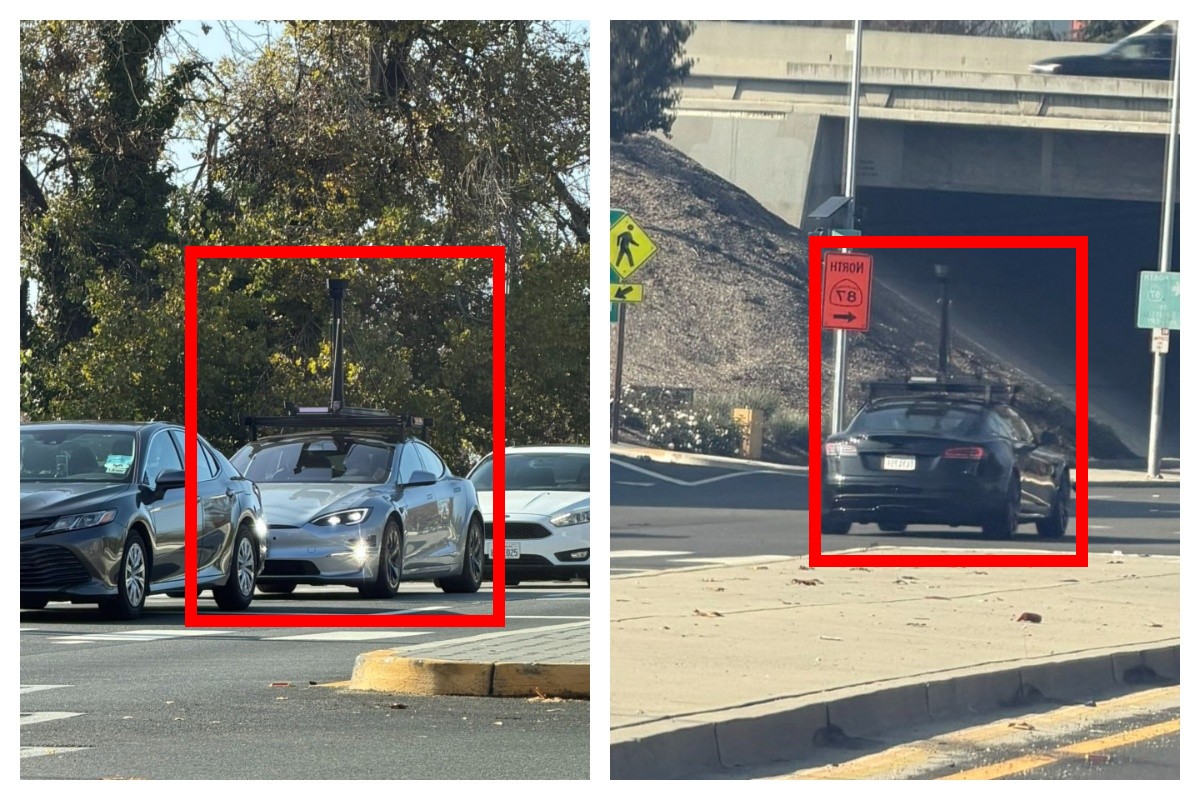
Tesla Model S vehicles were spotted performing validation testing with LiDAR rigs in California today, a pretty big switch-up compared to what we are used to seeing on the roads.
Tesla utilizes the Model Y crossover for its Robotaxi fleet. It is adequately sized, the most popular vehicle in its lineup, and is suitable for a wide variety of applications. It provides enough luxury for a single rider, but enough room for several passengers, if needed.
However, the testing has seemingly expanded to one of Tesla’s premium flagship offerings, as the Model S was spotted with the validation equipment that is seen entirely with Model Y vehicles. We have written several articles on Robotaxi testing mules being spotted across the United States, but this is a first:
🚨 Tesla is using Model S vehicles fitted with LiDAR rigs to validate FSD and Robotaxi, differing from the Model Ys that it uses typically
Those Model Y vehicles have been on the East Coast for some time. These Model S cars were spotted in California https://t.co/CN9Bw5Wma8 pic.twitter.com/UE55hx5mdd
— TESLARATI (@Teslarati) December 11, 2025
Why Tesla has chosen to use a couple of Model S units must have a reason; the company is calculated in its engineering and data collection efforts, so this is definitely more than “we just felt like giving our drivers a change of scenery.”
It seems to hint that Tesla could add a premium, more luxury offering to its Robotaxi platform eventually. Think about it: Uber has Uber Black, Lyft has Lyft Black. These vehicles and services are associated with a more premium cost as they combine luxury models with more catered transportation options.
Tesla could be testing the waters here, and it could be thinking of adding the Model S to its fleet of ride-hailing vehicles.
Reluctant to remove the Model S from its production plans completely despite its low volume contributions to the overall mission of transitioning the world to sustainable energy, the flagship sedan has always meant something. CEO Elon Musk referred to it, along with its sibling Model X, as continuing on production lines due to “sentimental reasons.”
However, its purpose might have been expanded to justify keeping it around, and why not? It is a cozy, premium offering, and it would be great for those who want a little more luxury and are willing to pay a few extra dollars.
Of course, none of this is even close to confirmed. However, it is reasonable to speculate that the Model S could be a potential addition to the Robotaxi fleet. It’s capable of all the same things the Model Y is, but with more luxuriousness, and it could be the perfect addition to the futuristic fleet.








